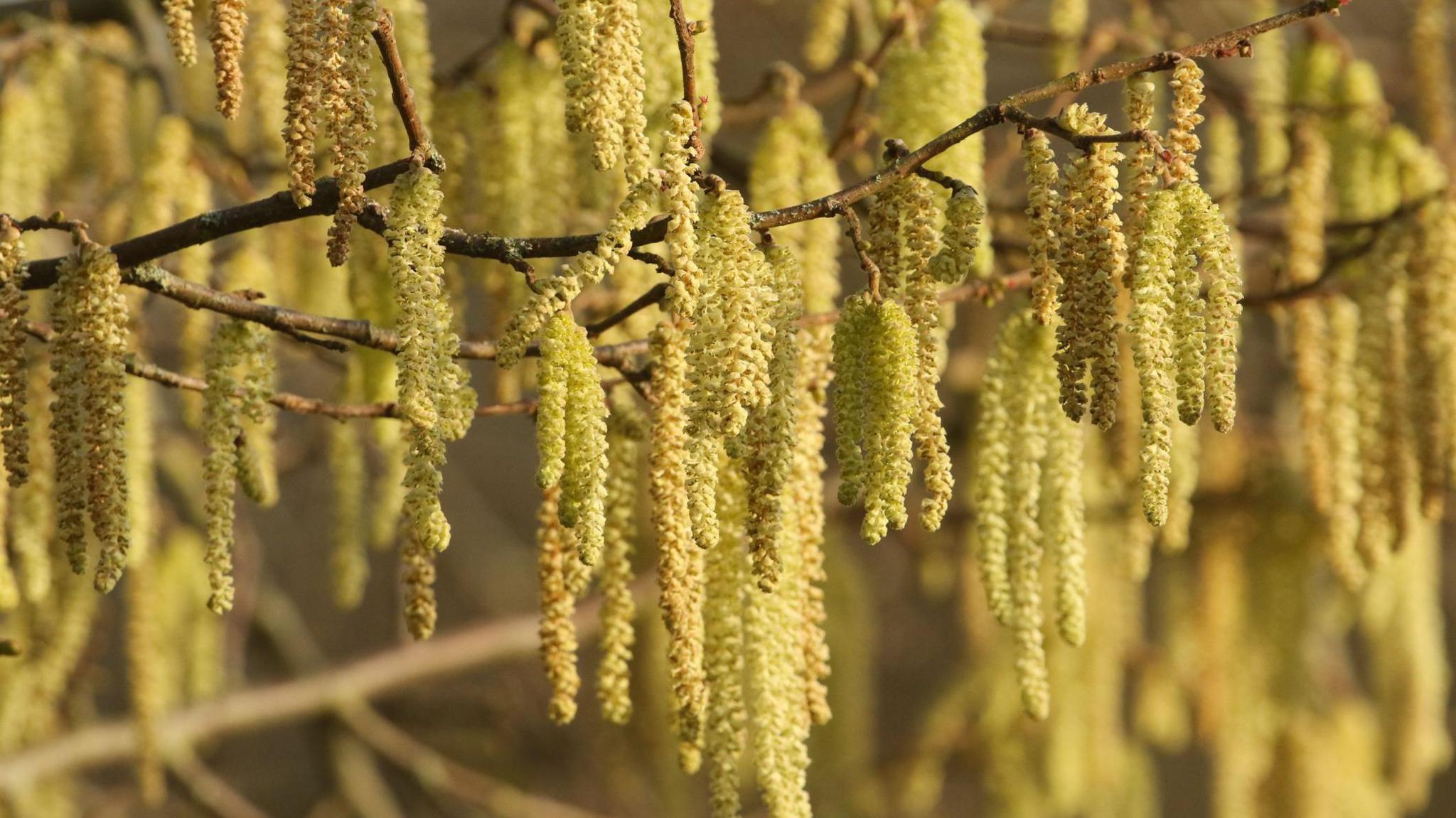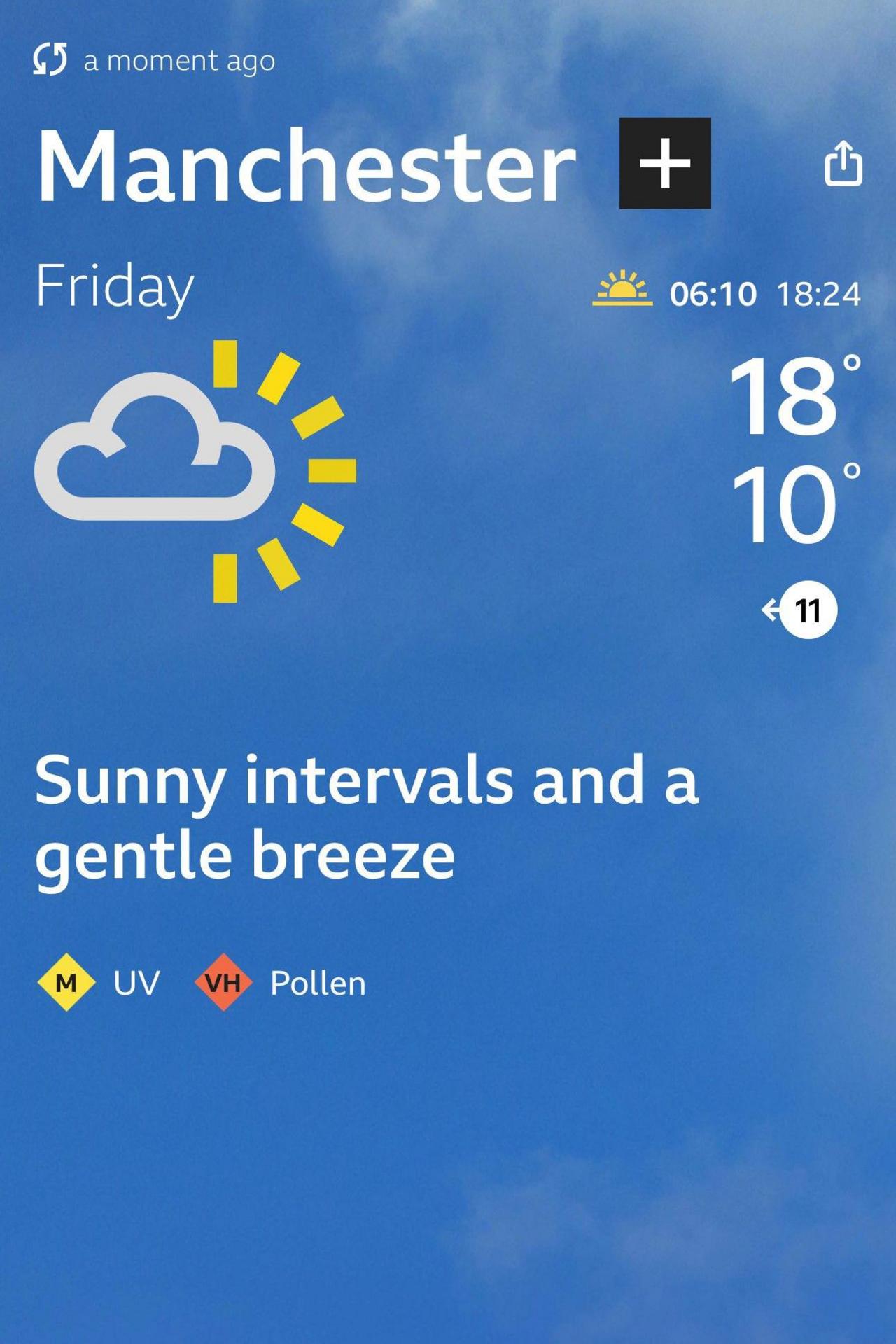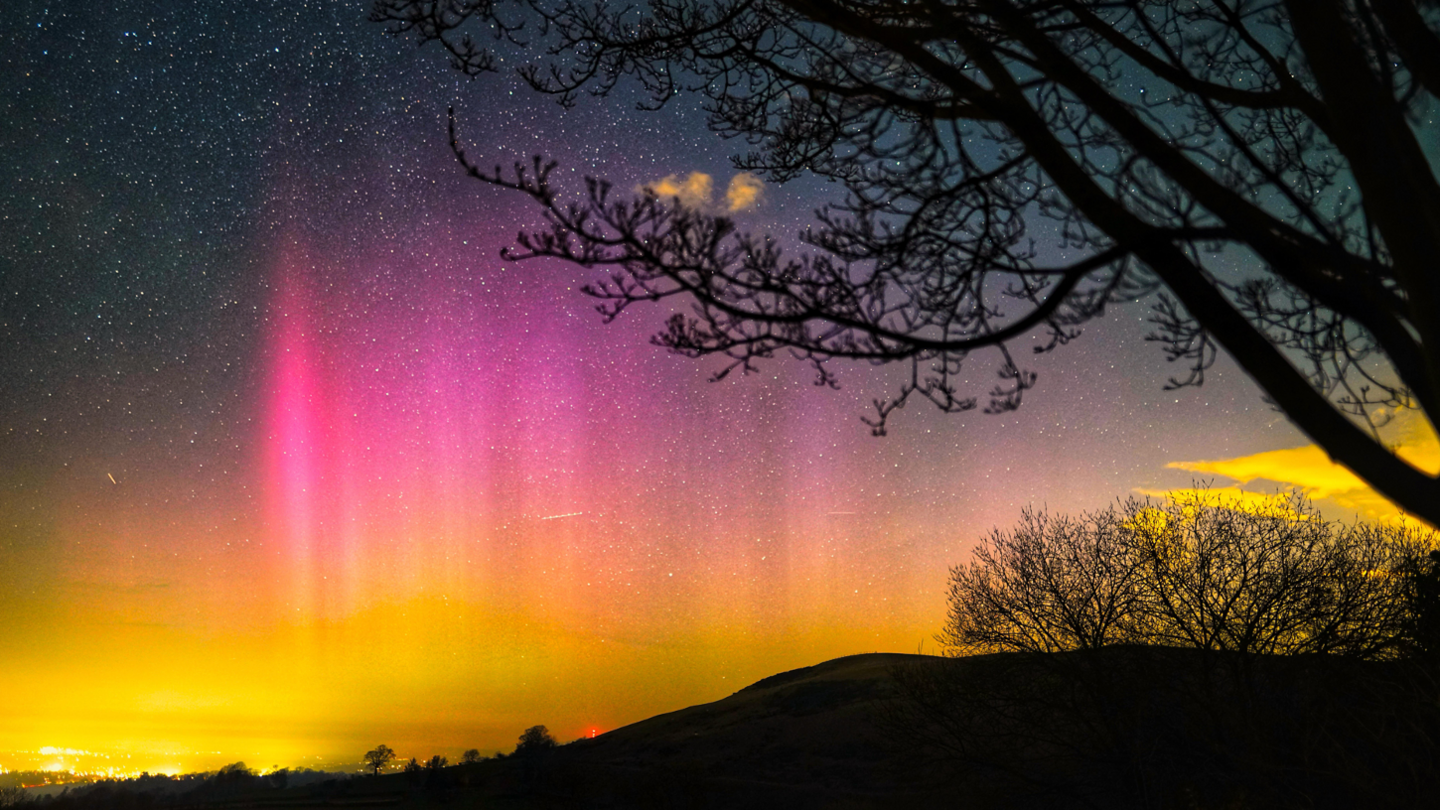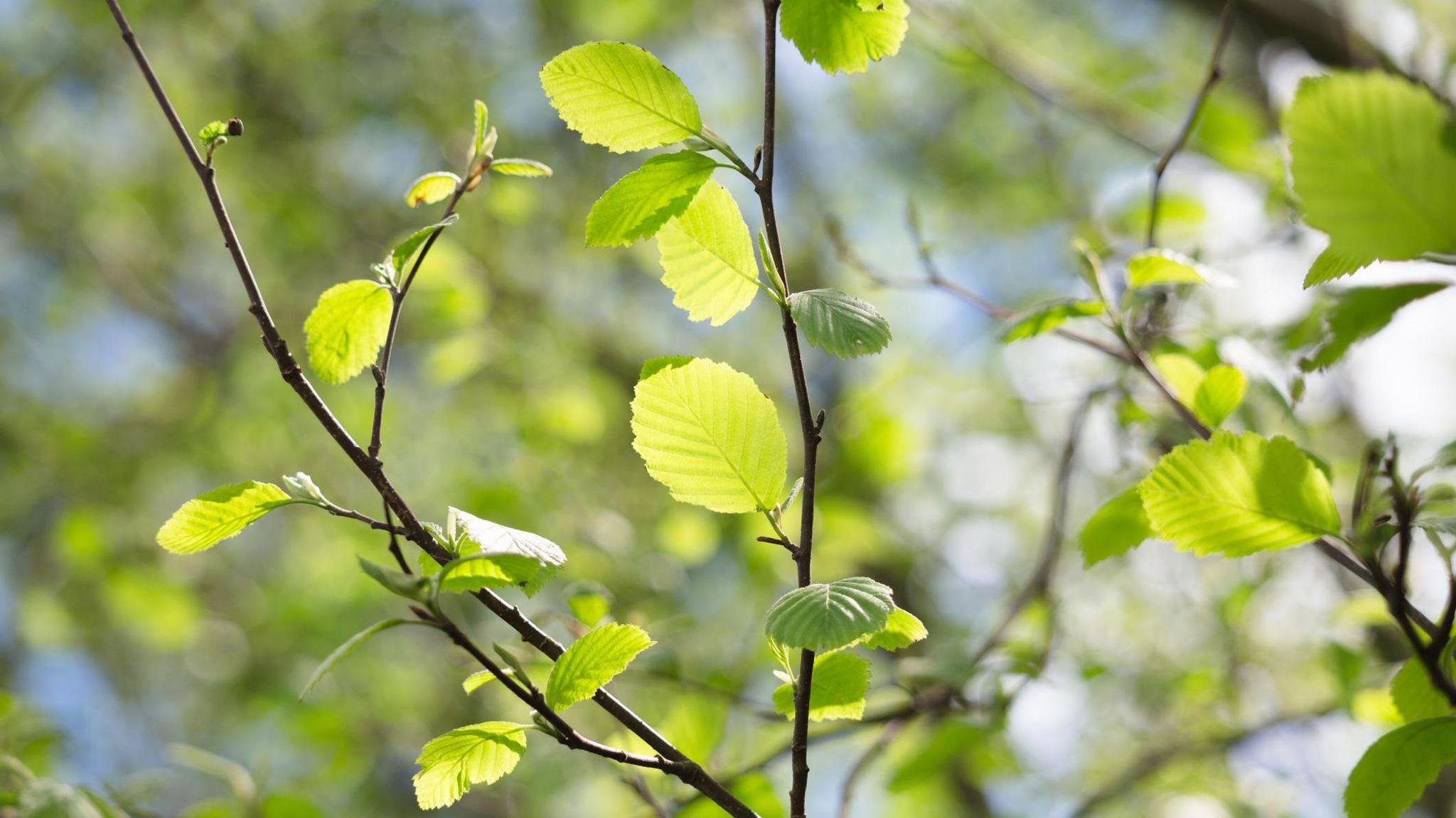High pollen levels bring a tricky start to spring for hay fever sufferers

- Published
Spring is now well underway and the seasonal pollen forecasts have made a return to the BBC Weather website and app.
It's estimated that 13 million people in the UK suffer from hay fever - the allergy to pollen.
It's been a sniffly start to the season with high or very high levels affecting most regions.
This has not been helped by the dry, warm and windy weather - ideal conditions for the release of pollen.
What type of pollen is around now?
In early spring the main culprit is tree pollen which - according to the Met Office - affects around 25% of sufferers.
The season broadly runs from March until May or June although some species such as alder, hazel and elm produce pollen as early as January.
Experts are predicting that it will be a severe tree pollen season overall due to warm weather last spring as well as normal year-to-year variations.
More widespread impacts are likely between May and July as grass pollen peaks, although the Met Office says it is too early to say how bad the season might be.

Grass pollen affects almost all hay fever sufferers
Weed pollen is the third major trigger for allergy sufferers with a season that tends to last from June until September.
The exact dates of the seasons will vary depending on where you live, with towns and cities likely to have less pollen than rural areas overall.
Is the pollen count high today in my area?
Day-to-day changes in the weather can make a big difference to how much pollen is produced and how easily it spreads.
Up to date pollen forecasts are available on the BBC Weather website and app throughout the spring and summer.
Just search for your location and you will find the latest pollen data alongside the UV forecast.

Pollen forecasts for UK locations are available on the BBC Weather app
Weather factors affect the pollen count. For example rain can suppress it, whereas warmth and sunshine tend to boost it - although on the very hottest days in summer levels can actually decrease.
The wind is also an important factor.
On the calmest days pollen will struggle to even lift off the ground whereas very strong winds will disperse it far and wide meaning lower concentrations in any particular place.
Hay fever and climate change
The impact of climate change on pollen is likely to be mixed.
For instance, research by the University of Worcester found that the birch tree pollen season is getting more severe, while grass pollen continues to fluctuate around the long-term average.
Oak and grass pollen seasons are starting earlier which is in line with research from other European countries.
Higher spring and summer temperatures were found to be driving these trends - as well as with changes in land use such as urbanisation and increasing amounts of woodland.
- Published20 March

- Published24 March

